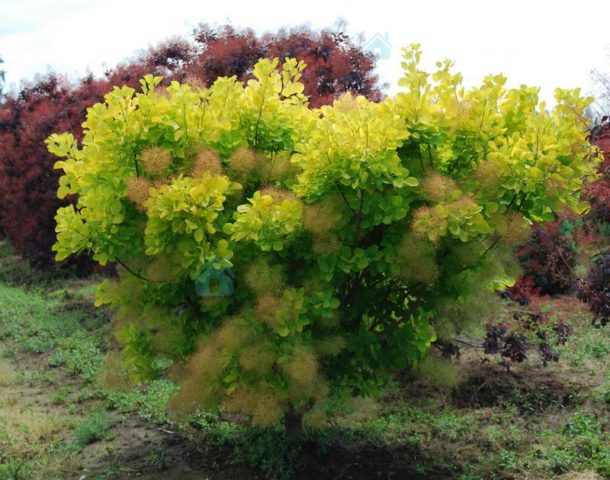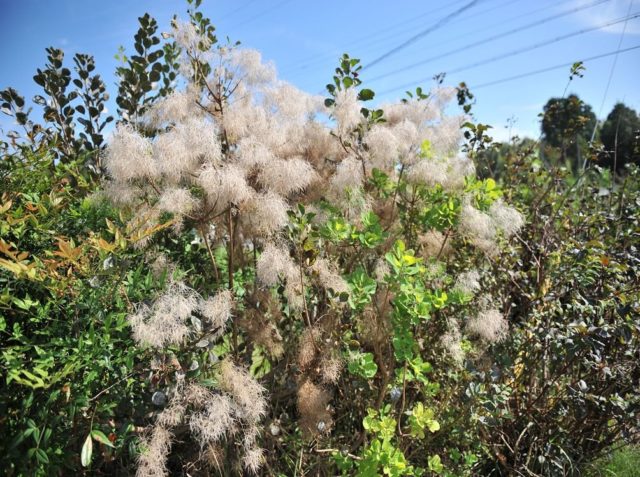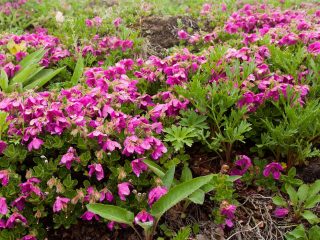Content
Mackerel is a unique deciduous shrub that amazes with the beauty of its flowering. This native of North America has won the hearts of gardeners around the world, so it is not surprising that even in central Russia many dream of growing this beautiful plant in their dacha. However, not every variety of shrub can take root in a given climate, so lovers of this plant should study the description of varieties of mackerel for the Moscow region.
Which varieties of scumpia are suitable for the Moscow region
Being a heat-loving deciduous plant, scumpia are very sensitive to sudden temperature changes, which are far from uncommon in the conditions of the Moscow region. Therefore, gardeners who decide to grow this spectacular crop on their plot should take a responsible approach to choosing the appropriate variety:
- In the Moscow region, seedlings purchased from nurseries take root most successfully. Preference should be given to crops that have survived 1 - 2 winters.
- Before planting, it is necessary to prepare a place for scumpia that is protected from drafts and not in the shade.
- Young shrubs and trees up to 3-4 years old should be covered during the winter months.
- For the Moscow region, frost-resistant varieties of crops are best suited, and it is important to take into account that varieties with green leaves tolerate frost more successfully than purple-leaved varieties.
According to reviews from plant growers, the following varieties of mackerel are popular for cultivation in the Moscow region.
Young Lady
Young Lady is the most common variety for cultivation in the middle zone, due to its excellent winter hardiness and ease of care. This not too tall shrub, up to 1.5 m in size, is distinguished by its pink inflorescences, which during the flowering period make it look like clouds at sunset. The bright green leaves of the crop acquire red hues by autumn.
Golden Spirit
Another green-leaved variety up to 2 m in height, highly decorative. Unlike Young Lady, Golden Spirit mackerel is quite sensitive to sudden changes in temperature, so it requires additional insulation for the winter. However, it is actively grown in the Moscow region due to the fabulously beautiful appearance that the golden foliage gives to the plant.
Grace
This spectacular variety, reaching a height of 2.5 - 3 m, stands out from other mackerel shrubs with dark green foliage with a deep purple tint, which in the fall is enriched with shades of red, orange and yellow. The culture blooms from late May or early June with lush crimson inflorescences, which makes it a wonderful decoration for landscape design in single and group plantings.
Royal Purple
The variety Royal Purple or Royal Purple also feels great in the climate of the Moscow region.This shrub grows up to 1.5 m and has a compact oval crown with dark purple leaf blades, which become bluish in autumn. The inflorescences of such scumpia have a noble burgundy hue.
Rubrifolius
This shrub immediately attracts attention not only with its foliage, but also with the volume of its crown, since with a small height of 1.5 - 2 m it has a diameter of 2.5 - 3 m. The blue-violet foliage in the weather conditions of the Moscow region retains its color throughout summer, becoming red only in autumn. The aerial inflorescences have a lilac-purple hue similar to the foliage.
All of the above varieties of leather mackerel are capable of not only growing well, but also blooming luxuriantly in the Moscow region, if the conditions for planting and caring for this crop are properly observed.
Rules for growing tanned mackerel in the Moscow region
Since mackerel is of tropical origin, you should prepare for the fact that even frost-resistant plant varieties will require additional care in central Russia. When cultivating mackerel in the Moscow region, to maintain the health of the bush, you should pay special attention to the place and timing of planting, and also devote enough time to watering and pruning.
Deadlines
Mackerel seedlings are usually planted in the spring, but if the young plant has a closed root system, then planting can be done at any time of the year, except winter. The main thing for him is to have time to take root before the onset of stable frosts. Seeds are sown in early autumn or early spring.
Site selection and soil preparation
Since the mackerel comes from warm latitudes, it loves the sun very much, so when choosing a planting site in the Moscow region, it is worth pre-allocating the plant an open area with plenty of light. In no case should you plant shrubs under tall trees - abundant shade inhibits their growth and negatively affects flowering. In addition, mackerel does not react well to drafts, as a result of which it is not superfluous to take care of protecting these shrubs from strong winds.
Mackerel is not too picky about the quality of the soil, but it grows most luxuriantly in slightly alkaline soils. In turn, too acidic soil has an adverse effect on the development of shrubs. Excessively wet soil also does not have a very good effect on the health of the plant, especially if groundwater is located near the surface of the earth, so this feature must also be taken into account when planting crops in the Moscow region.
Planting scumpia in the Moscow region
Having decided on a permanent growing location, you can begin planting the mackerel:
- The planting hole should be larger than the earthen ball of the plant.
- Immediately before planting, it is worth soaking the seedlings in water, and watering the hole itself generously at the rate of 2 buckets of water per place.
- If necessary, 20 - 30 cm of drainage material should be laid at the bottom of the hole, after which a small elevation of the substrate should be made on top of it and the seedling placed on it.
- At the end of the procedure, the depression must be filled in and the soil compacted tightly.
Aftercare
As for care, scumpia cannot be classified as a capricious plant. In the climate of the Moscow region, caring for shrubs consists of timely watering and pruning. In addition, some varieties of mackerel will need to be covered for the winter.
As already mentioned, excess moisture can be detrimental to these shrubs, so the scumpia are watered as the earthen clod dries out, bringing water directly to the base of the plant. During dry summers, watering can be increased.
Mackerel feeding in the Moscow region is carried out 2 times: with nitrogen compounds - during the growth of green mass by the plant, and with phosphorus-potassium compounds - during the budding period. The crop responds equally well to mineral and organic fertilizers, so to achieve the most effective flowering, it would be advisable to alternate such feeding methods.
Most varieties of mackerel suitable for growing in the Moscow region are subject to regular pruning. As a rule, this procedure is carried out at the end of April, before the beginning of the growing season, no more than once every 2-3 years. During the process, the bush is rid of dry or damaged branches. Pruning the plant for decorative purposes is not required, since the natural shape of the crown looks very impressive without additional intervention.
Although some varieties of scumpia are quite frost-resistant, in the weather conditions of the Moscow region, in preparation for winter, protective structures are made for these shrubs. Before covering the plants, the soil in the tree trunk circle is mulched using peat or humus, and the crown is tied with straw or spruce branches, after which it is insulated with a special non-woven material.
Pests and diseases
Despite the fact that mackerel gives the impression of being a rather delicate plant, it is highly resistant to various diseases. A threat to the well-being of shrubs in the Moscow region is posed only by certain species of insects, such as the fawn leaf beetle and the scumpian psyllid.
They eat the leaf blades of the bush, thus weakening the mackerel, to the detriment of its aesthetic appearance. Insecticides, for example, Decis and Karbofos, will help cope with these pests.
In addition, in winter, mackerel is especially vulnerable to various rodents and hares, which, due to the lack of other food, are not averse to profiting from the bark of this plant. A reliable winter shelter can save the situation. Whitewashing the bush may also be useful.
Conclusion
Having studied the description of the varieties of mackerel for the Moscow region, we can conclude that shrubs with high frost resistance grow most successfully in the conditions of central Russia. Proper care will help to cultivate healthy plants and provide them with abundant flowering.














